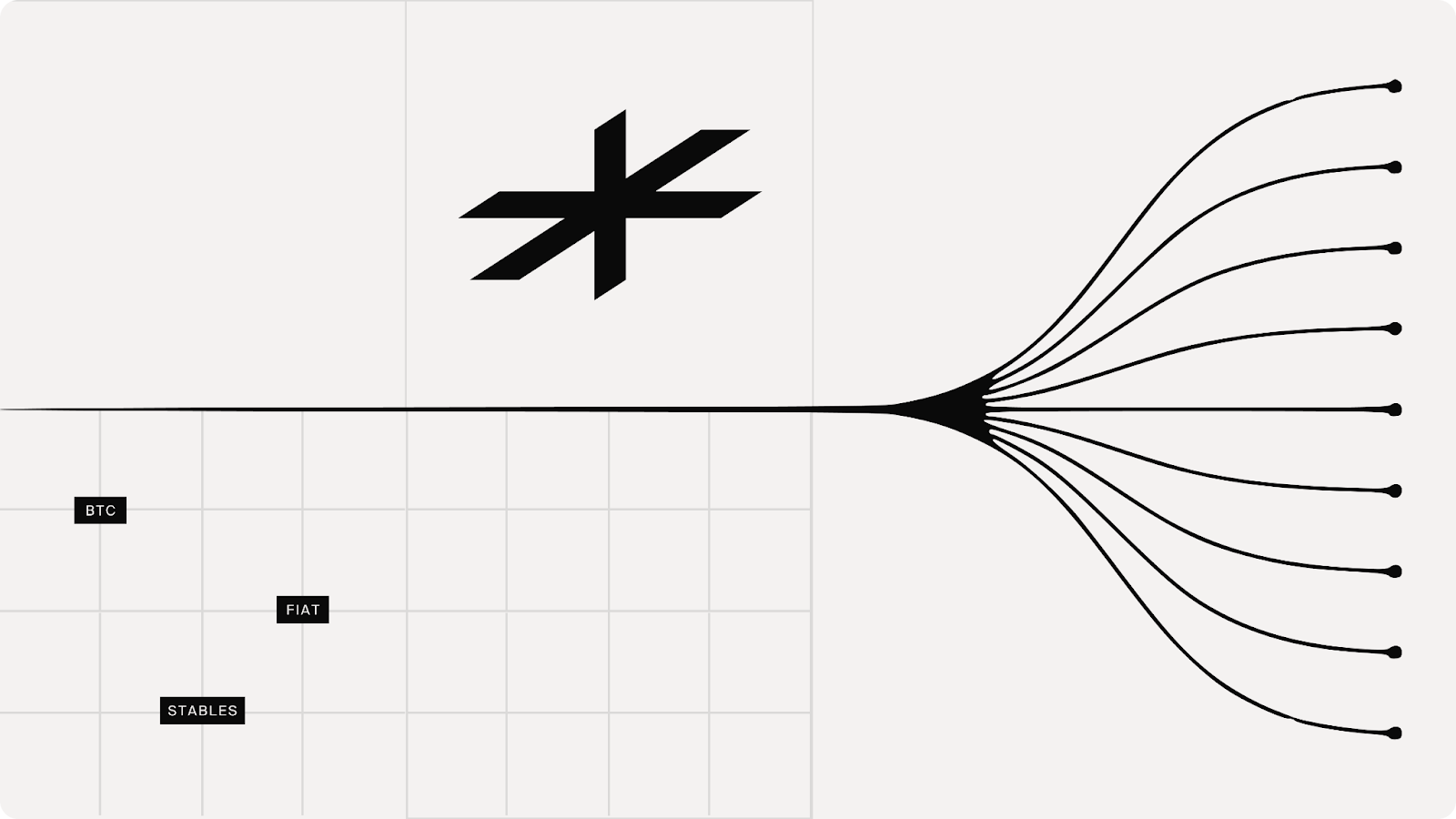Cryptocurrency has emerged as more than just an asset class; it’s now a tool for global payments, savings, and financial infrastructure.
But to unlock real-world utility, users and institutions need a reliable way to convert crypto into fiat. That’s where crypto off-ramps come in.
This guide explains how crypto off-ramps work, what to look for in a platform, and how emerging infrastructure like the Lightning Network is changing the game for digital banks, fintechs, and global merchants.
What is a crypto off-ramp?
A crypto off-ramp is a service or platform that allows users to convert digital assets (like Bitcoin or USDC) into traditional fiat currencies (like USD, EUR, or NGN). It acts as a bridge between decentralized finance (DeFi) and the traditional financial system (TradFi).
This is the counterpart to a crypto on-ramp, which allows users to purchase crypto with fiat.
In 2025, off-ramps are more essential than ever. As crypto is increasingly used for payments, payroll, and settlements, off-ramps ensure these assets can re-enter the real-world economy safely, quickly, and compliantly.
Why crypto off-ramps matter more than ever
Integration with the traditional financial system
Crypto holders want to spend, save, and invest in fiat, without having to abandon their digital assets altogether. Off-ramps enable that bridge.
For businesses, off-ramps are essential for:
- Payroll and vendor payments
- Handling crypto-based revenue
- Meeting tax obligations
Liquidity management for individuals and institutions
Crypto’s volatility makes fiat liquidity critical. Off-ramps help:
- Individuals convert during market swings
- Companies maintain cash buffers
- Neobanks and digital banks handle treasury operations
Global relevance for Web3 builders and financial platforms
In emerging markets and borderless ecosystems, off-ramps:
- Power usability for consumers and merchants
- Support compliance needs in fintech and DeFi
- Enable real-world utility for dApps and wallets
How crypto off-ramps work
The user flow is typically:
- Choose crypto/fiat pair (e.g. BTC to USD)
- Set a sell order (amount, pricing, etc.)
- Add withdrawal method (bank account, card, mobile money)
- Send crypto and receive fiat
Off-ramps can take several forms:
- Centralized exchanges (e.g. Coinbase, Kraken)
- Peer-to-peer platforms (e.g. Paxful, Remitano)
- OTC desks (for institutional volume)
- API integrations (embedded into wallets or apps)
Key considerations when choosing a crypto off-ramp
Speed and settlement time
Some off-ramps settle in minutes; others take hours or days. Near-instant options are critical for high-frequency users and businesses.
Fees and exchange rates
- Look for transparent fee structures
- Compare flat vs. variable fees
- Watch for spread markups or hidden charges
Supported currencies and liquidity depth
- Ensure your desired crypto and fiat pairs are supported
- Choose platforms with deep liquidity to avoid slippage
- Consider global vs. regional access
Security and fraud protection
Reputable off-ramps offer:
- Two-factor authentication
- Cold storage for funds
- Audits and compliance certifications
Regulatory compliance and licensing
Especially important for institutions. Ensure:
- Full KYC/AML onboarding
- Clarity on jurisdictional risks
- Tax reporting support if needed
Top crypto off-ramp platforms in 2025
Here are some of the most trusted platforms globally:
The next frontier: Lightning-powered off-ramps
Why legacy off-ramps fall short
Traditional off-ramps often rely on batch settlements, introducing latency and inefficiencies. This creates friction for:
- Microtransactions
- Instant payouts
- Real-time treasury needs
Enter Lightspark and the Lightning Network
Lightspark leverages the Bitcoin Lightning Network to power faster, cheaper, and more scalable off-ramps. Key benefits include:
- Near-instant settlement finality
- Lower fees using Layer 2 payment channels
- Reduced liquidity risk for banks and fintechs
- Programmable APIs for wallet and neobank integration
Challenges to watch for
- Regulatory friction (KYC/AML, local licensing requirements)
- Banking de-risking, which may limit fiat off-ramp access
- Security risks, including exchange hacks and P2P fraud
- Inconsistent availability of off-ramps across jurisdictions
Tips for safe and efficient crypto off-ramping
- Use licensed, well-reviewed platforms
- Double-check wallet addresses and withdrawal details
- Avoid platforms with high or opaque fees
- Be cautious with peer-to-peer trades unless experienced
- Stay updated on regulatory changes in your country
Why it matters to financial institutions
For digitally native banks and fintechs, off-ramps are no longer optional:
- Neobanks can offer crypto services without holding crypto
- Digital banks can streamline fiat settlement for crypto users
- Fintech apps can reduce FX and friction in global payouts
- Merchants can convert crypto sales into fiat cheaply and instantly
The Lightspark advantage in off-ramping
Lightspark combines the power of the Bitcoin Lightning Network with enterprise-grade infrastructure to offer:
- Lightning-native speed and cost savings
- Real-time liquidity visibility
- Flexible APIs for embedded use cases
- Built-in compliance and fiat bank integration
This makes Lightspark ideal for:
- Fintechs building crypto rails
- Neobanks offering crypto payout options
- Wallet providers expanding into fiat settlement
Build a better bridge between crypto and fiat
Off-ramps are a critical component of the crypto economy. Choosing the right platform can improve security, reduce costs, and unlock new use cases, from personal finance to embedded financial infrastructure.
As legacy off-ramps reach their limits, platforms like Lightspark point to a faster, cheaper, and more programmable future.
Now is the time for crypto-powered businesses, apps, and financial institutions to assess their off-ramp strategies and integrate next-gen infrastructure that can scale with their ambitions.


